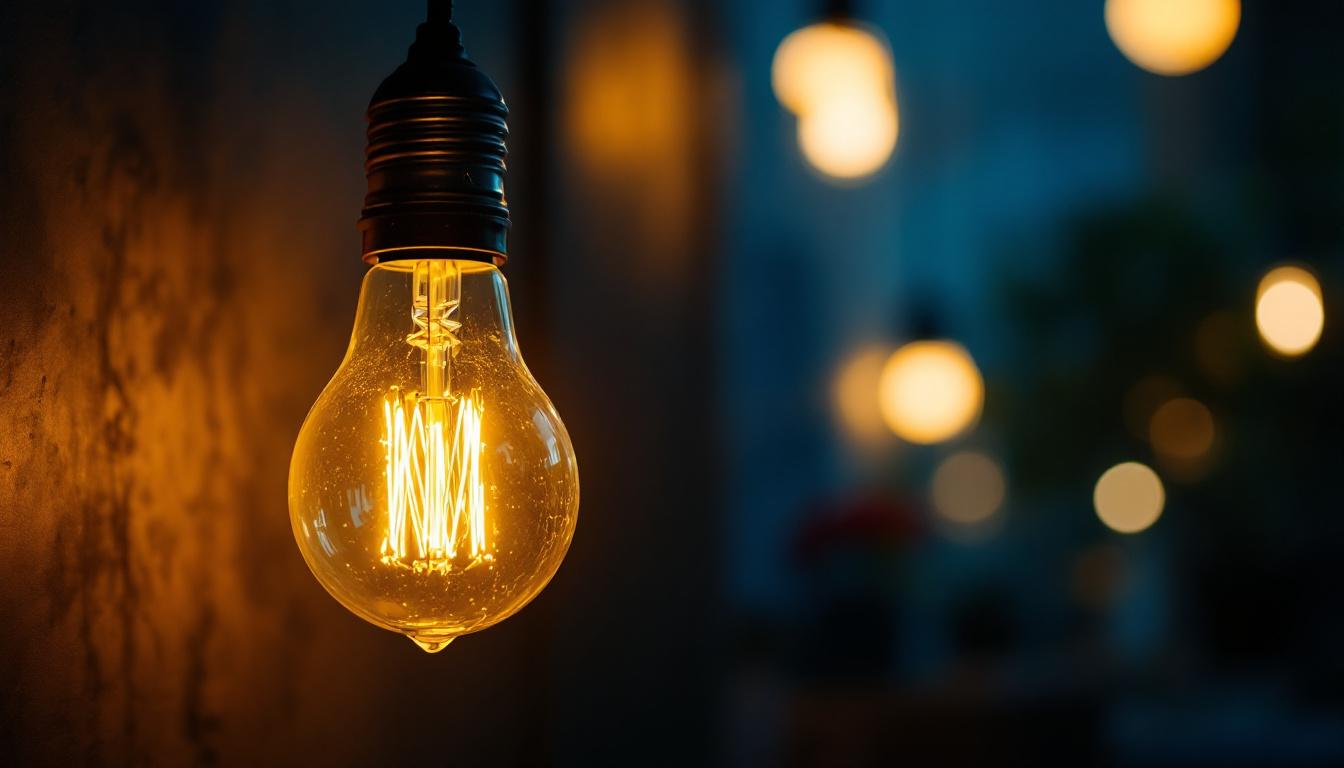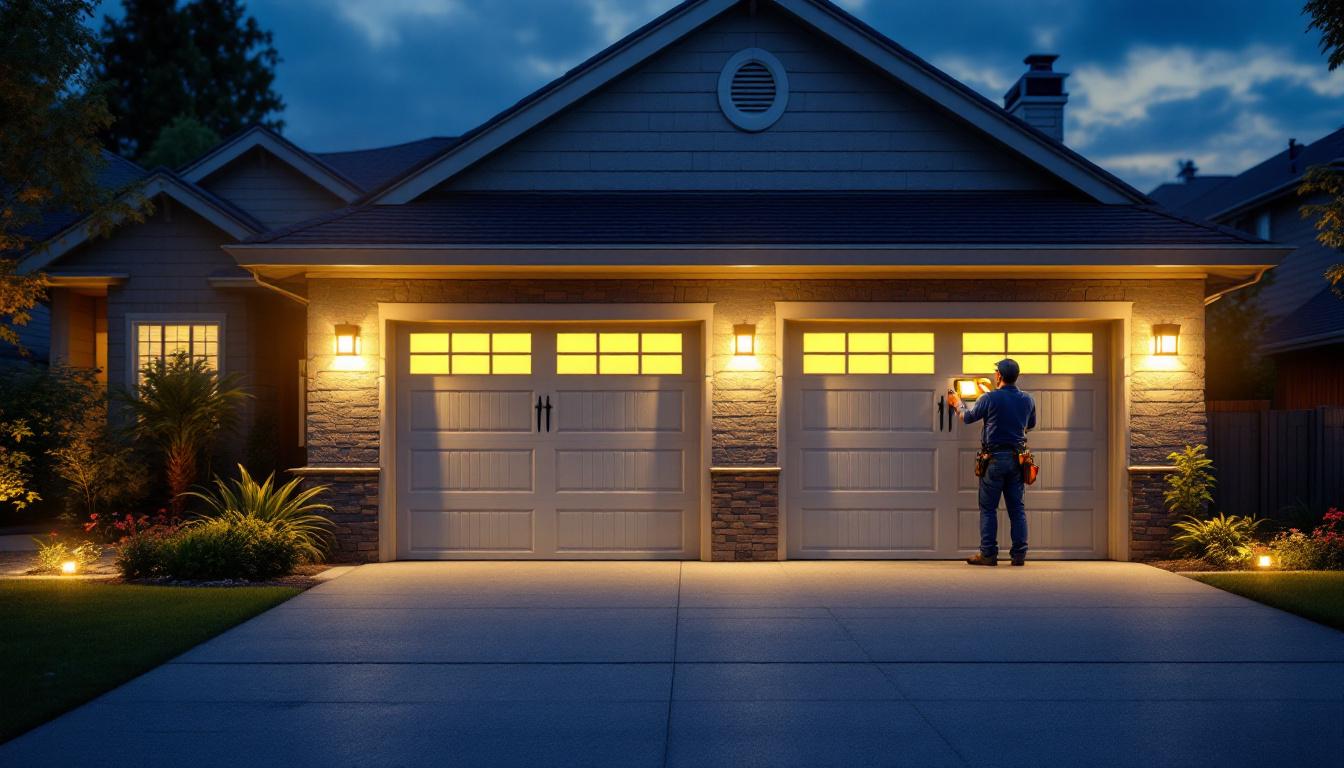
The invention of the light bulb marked a pivotal moment in the history of technology and energy consumption. For lighting contractors, understanding the timeline of this innovation is crucial, as it lays the foundation for modern lighting solutions and energy-efficient practices. This article delves into the origins of the light bulb, its evolution, and the implications for energy-efficient lighting today.
The journey to the electric light bulb began long before its actual invention. Early attempts at creating artificial light can be traced back to ancient civilizations that utilized oil lamps and candles. However, the quest for a more efficient and safer source of light was relentless.
Various inventors experimented with different materials and technologies, including arc lamps and incandescent lamps, which paved the way for the eventual development of the modern light bulb. These early innovations laid the groundwork for what would become a revolutionary change in how humans illuminated their environments.
Before the light bulb as we know it emerged, inventors like Humphry Davy and Warren de la Rue made significant contributions. Davy’s arc lamp was one of the first forms of electric lighting, demonstrating that electricity could produce light. Meanwhile, de la Rue’s incandescent lamp utilized a coiled platinum filament, showcasing the potential of electric light.
Despite their ingenuity, these early models were not practical for widespread use. The high cost of materials and the inefficiency of the designs limited their application, leaving room for further innovation. In addition to Davy and de la Rue, other inventors such as Joseph Swan and Thomas Edison were also experimenting with various filament materials and designs. Swan’s work in the 1870s led to the creation of a carbonized paper filament, which was a significant step forward, as it provided a more affordable alternative to platinum, making electric lighting more accessible to the masses.
The breakthrough in light bulb technology came with the development of a more effective filament. This was achieved through a combination of materials and design enhancements that improved durability and efficiency. The introduction of carbonized materials as filaments marked a significant advancement, allowing for longer-lasting and brighter light sources.
As these innovations progressed, the concept of electric lighting began to gain traction among the public and businesses alike. The idea of illuminating homes and streets with electric light transformed societal norms and expectations regarding lighting. Cities began to invest in electric streetlights, which not only improved safety but also extended the hours during which people could engage in social and economic activities. This shift had profound implications for urban development, as neighborhoods became more vibrant and bustling after dark. The electric light bulb not only illuminated spaces but also symbolized progress and modernity, ushering in a new era where the night was no longer a barrier to productivity and leisure.
Once the basic design of the light bulb was established, the evolution of lighting technology accelerated. Various types of bulbs emerged, each with unique features and benefits, catering to different needs and preferences.
From incandescent bulbs to fluorescent and LED technologies, each advancement has contributed to energy efficiency and improved lighting quality. Understanding these developments is essential for lighting contractors aiming to provide the best solutions for their clients.
Incandescent bulbs were the first type of electric light to become widely adopted. They work by passing electricity through a thin filament, which then heats up and produces light. While these bulbs were revolutionary at the time, they are known for their inefficiency, as much of the energy consumed is lost as heat.
Despite their shortcomings, incandescent bulbs remained popular for decades due to their warm light and affordability. However, the push for energy efficiency led to the exploration of alternative lighting technologies. Interestingly, the simple design of incandescent bulbs has inspired many modern aesthetic choices in lighting fixtures, where the nostalgic glow of vintage-style bulbs continues to charm homeowners and designers alike.
Fluorescent lighting emerged as a more energy-efficient alternative to incandescent bulbs. These lights operate by exciting mercury vapor, which produces ultraviolet light that then illuminates a phosphor coating inside the bulb. This technology allows for significantly lower energy consumption while providing bright, white light.
Fluorescent bulbs became a staple in commercial and industrial settings, where their longevity and efficiency offered substantial cost savings. However, they also presented challenges, such as flickering and the presence of hazardous materials like mercury, which necessitated careful disposal. Over time, advancements in technology have led to the development of compact fluorescent lamps (CFLs), which are smaller and more versatile, allowing for greater flexibility in design and application. These innovations have made fluorescent lighting a common choice for both residential and commercial spaces, further enhancing its appeal.
Light Emitting Diodes (LEDs) represent the latest advancement in lighting technology. LEDs are highly energy-efficient, consuming significantly less power than both incandescent and fluorescent bulbs while offering longer lifespans. This makes them an ideal choice for both residential and commercial applications.
Moreover, LEDs are versatile, available in various colors and designs, and can be easily integrated into smart lighting systems. For lighting contractors, understanding the benefits and applications of LED technology is crucial for providing clients with modern, sustainable lighting solutions. The adaptability of LEDs has also sparked creativity in architectural and landscape lighting, allowing for dynamic installations that can change color and intensity, enhancing the ambiance of any space. As the technology continues to evolve, the potential for innovative applications in lighting design seems limitless, paving the way for a brighter, more energy-efficient future.
The invention of the light bulb has had a profound impact on energy consumption patterns worldwide. As electric lighting became commonplace, the demand for electricity surged, leading to the development of extensive power generation and distribution systems.
However, the rise of energy-efficient lighting technologies has begun to reverse some of the trends associated with high energy consumption. Understanding this shift is vital for lighting contractors, as it informs the choices they make in recommending lighting solutions to clients.
In response to growing concerns about energy consumption and environmental impact, governments and organizations worldwide have established energy efficiency standards for lighting products. These standards aim to reduce energy waste and promote the use of more sustainable technologies.
For lighting contractors, staying informed about these regulations is essential. It not only ensures compliance but also positions them as knowledgeable professionals who can guide clients toward energy-efficient solutions that align with current standards.
One of the most compelling arguments for adopting energy-efficient lighting is the potential for cost savings. While the initial investment in LED or other energy-efficient bulbs may be higher than traditional incandescent options, the long-term savings on energy bills can be substantial.
Lighting contractors can play a crucial role in educating clients about the financial benefits of energy-efficient lighting. By providing clear comparisons of energy costs over time, contractors can help clients make informed decisions that benefit both their wallets and the environment.
The future of lighting technology is bright, with ongoing research and innovation paving the way for even more efficient and intelligent lighting solutions. Emerging technologies, such as smart lighting systems and advancements in organic light-emitting diodes (OLEDs), promise to further enhance the capabilities of lighting.
For lighting contractors, keeping abreast of these developments is essential. As clients increasingly seek out smart and sustainable solutions, contractors who are knowledgeable about the latest technologies will be better positioned to meet their needs.
Smart lighting systems allow for greater control over lighting environments, enabling users to adjust brightness, color, and timing through mobile apps or voice commands. This level of customization not only enhances user experience but also contributes to energy savings by allowing lights to be turned off or dimmed when not needed.
Contractors who can install and integrate smart lighting solutions will find themselves in high demand as more homeowners and businesses seek to modernize their lighting systems.
Organic Light Emitting Diodes (OLEDs) represent a significant leap forward in lighting technology. Unlike traditional LEDs, OLEDs produce light over a larger surface area, allowing for thinner, more flexible lighting designs. This opens up new possibilities for architectural lighting and design.
As OLED technology continues to evolve, it is likely to become a more prominent player in the lighting market. Contractors who familiarize themselves with this technology will be able to offer innovative solutions that cater to the aesthetic and functional needs of their clients.
The invention of the light bulb has transformed the way we illuminate our world, setting the stage for continuous advancements in lighting technology. For lighting contractors, understanding the historical context and evolution of lighting is not just an academic exercise; it is a vital component of providing effective, energy-efficient solutions to clients.
As the industry moves toward smarter, more sustainable lighting options, contractors who embrace this legacy and stay informed about emerging technologies will be well-positioned to lead the way in energy-efficient lighting. By doing so, they not only enhance their business prospects but also contribute to a more sustainable future for all.
As you embrace the rich legacy of the light bulb and look to the future of energy-efficient lighting, LumenWholesale is here to support your journey. We provide lighting contractors with an unbeatable selection of spec-grade lighting products at wholesale prices that defy local distributor markups. Our commitment to quality and affordability ensures that you can light up your projects with confidence, backed by the convenience of hassle-free bulk purchases and free shipping. Elevate your lighting solutions and maximize your value with Wholesale Lighting at the Best Value from LumenWholesale.

Discover the essential role of light fixtures in modern design and why every lighting contractor should prioritize them.

Discover how Phoenix LED Lights are revolutionizing the lighting industry for contractors, offering energy efficiency, durability, and innovative design solutions that enhance project outcomes and client satisfaction..

Discover why LED garage outdoor lights are a game-changer for lighting contractors.
Discover how electrical washers can be a game-changer for lighting contractors seeking to win more bids.